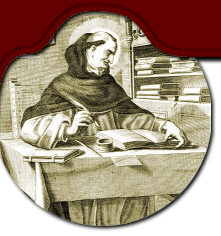Why Summa Gallicana?
One day, after nearly two years of working and working, I realized that the purposes with which I begun in drawing up something, that could be useful to the Italian Chicken Breeders, had gone beyond my expectations.
Like a cherry follows another one, so an information often requires another one to be clarified. Then, like it happens sometimes, I also started with an intent and went to a never imagined shore: from the central nucleus - hinged on the several chicken genetic mutations - I found myself at the Big Bang, the origin of Universe.
It was not a wanted sin: the information was gathered according to a quite logical thread centred on chicken origin and evolution and therefore of birds, hiding behind them the dinosaurs and their ancestors.
I found a pile of data in my hands and once more I felt that I was assembling the whole about chicken knowledge.
The mind flew to the high school time, when I faced the Saint Thomas of Aquino philosophy, who wrote the Summa Theologica dealing with all God is concerning with.
I told me: why, then, don't entitle this treatise Summa Gallicana?
Perhaps this paper had full right nevertheless the gallicana term being incorrect: only an assonance with intentions between serious and facetious.
But so befell.
Saint Albert the Great
- born in Svevia between 1193 and 1206 and therefore called Teutonic - gave an important contribution to both zoology and botany, and probably he first described the matreshka egg
. In 1941 pope Pious XII chose him as Patron of Natural Sciences Students... but Saint Albert had also been Saint Thomas'
teacher.
It came off a quite casual triangle: He, Summa Theologica and, then, Summa Gallicana.
Eight million of years ago the Gallus genus defined itself and therefore I have picked this subtitle, to remember that the chicken is at least around 4 million of years less young than the man is.
Translation reviewed by Stefania Fersini
Pavia
